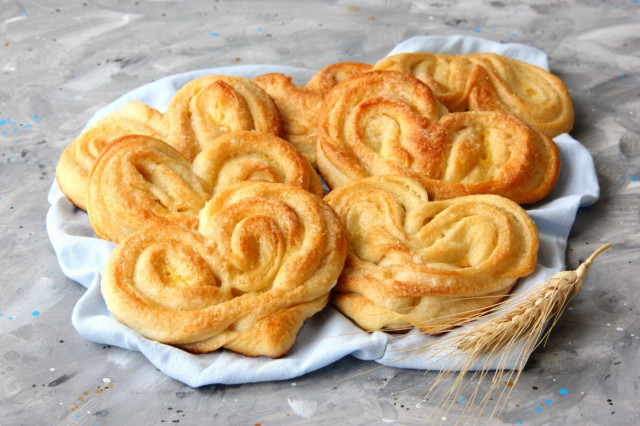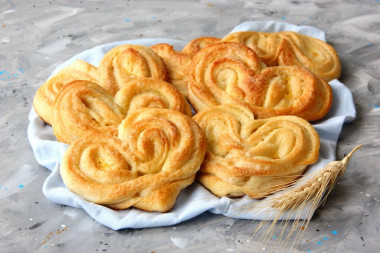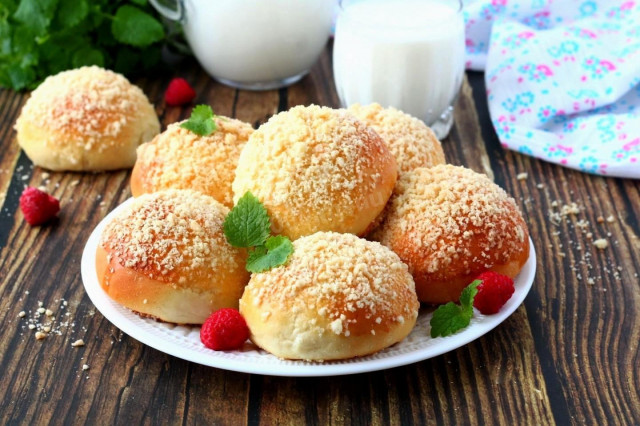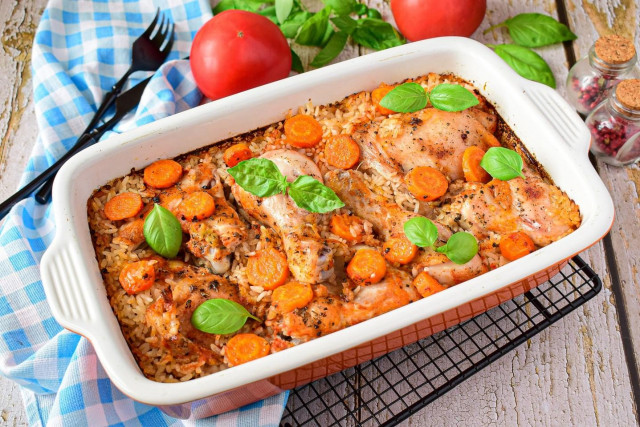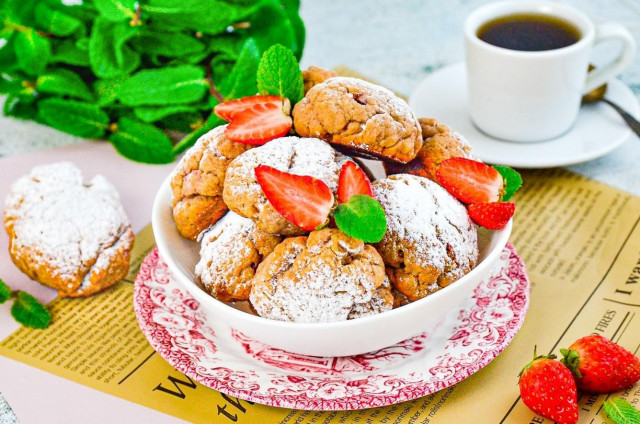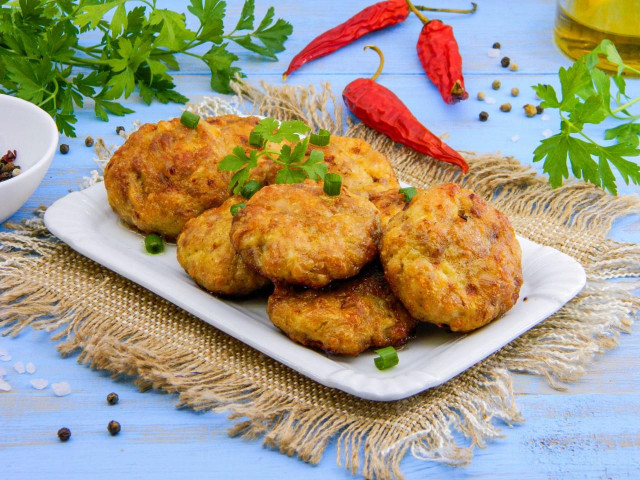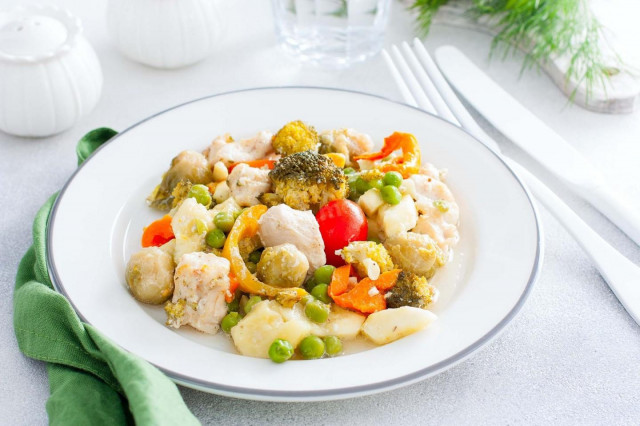Composition / ingredients
Step-by-step cooking
Step 1:
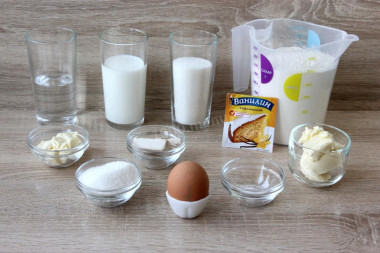
How to make buns with sugar from yeast dough? Prepare the products, all should be at room temperature. I cook with fresh pressed yeast, you can take dry ones, but they need three times less, i.e. 8 grams is enough. / take fast-acting ones that activate in warm water or milk, then the algorithm of actions will not change/. Of the total amount of milk, leave 1 des.l. for greasing the buns.
Step 2:
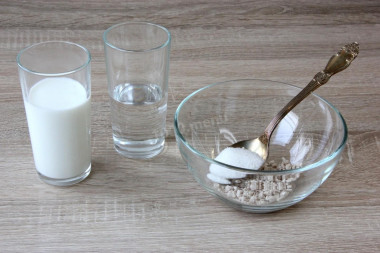
Cooking SOURDOUGH. In a deep enough cup, crumble the yeast, add a spoonful of sugar. Warm up the water and milk / lukewarm 35&039; - 38&039;/. Pour in a small amount of water, rub the yeast until smooth, add the rest of the water and milk. Stir well and leave for 15-20 minutes to activate the yeast. /A "cap" should appear, if it is not there - the yeast is inactive and they need to be replaced, otherwise you will just waste time and products/.
Step 3:
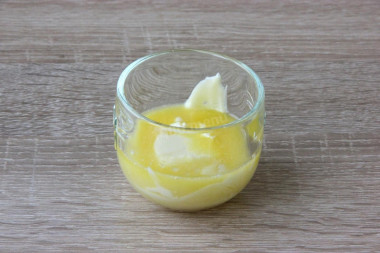
Melt the butter and let it cool.
Step 4:
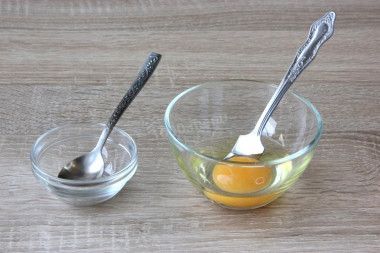
Stir the egg well and pour out 1 tbsp of egg mass, it will go to lubricate the buns.
Step 5:
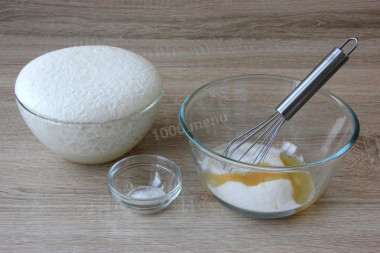
Prepare THE DOUGH. Add the rest of the egg to the sugar, add salt, pour in the risen yeast mixture - stir everything.
Step 6:
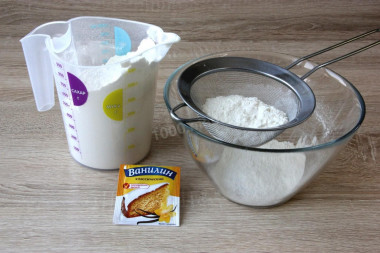
In a separate bowl, sift wheat flour with vanilla.
Step 7:
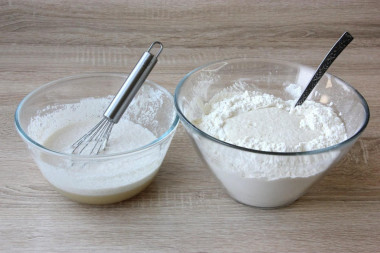
Make a recess in the flour, where pour the mixture of liquid ingredients, knead the dough.
Step 8:
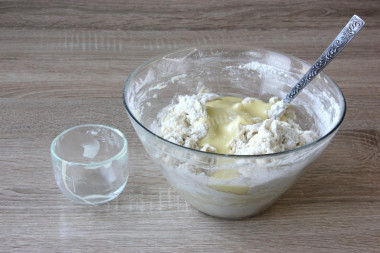
At the end of the kneading, add the cooled butter. Knead the dough for 7-10 minutes / lubricate the table and hands a little with vegetable oil /. The dough is ready when it becomes smooth and will not stick to the hands and table.
Step 9:
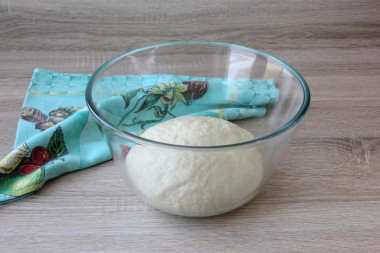
Brush a clean bowl with vegetable oil, roll the dough into a ball and place it in a bowl. Cover with a film and a napkin, leave to rise in the heat for 1-1.5 hours.
Step 10:
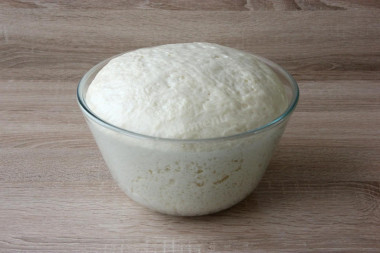
That's how the dough came up after 1 hour and 20 minutes. It is ready when it increases by 2.5 times and is about to begin to fall off.
Step 11:
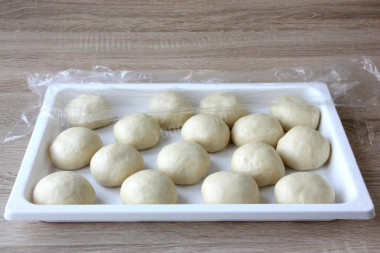
Lightly grease the table with vegetable oil, lay out the dough, lightly giving it the shape of a roll. Divide the dough into 16 parts, about 60-63 grams per piece. Round each piece by turning the dough down. Cover with a film so that the dough does not curl.
Step 12:
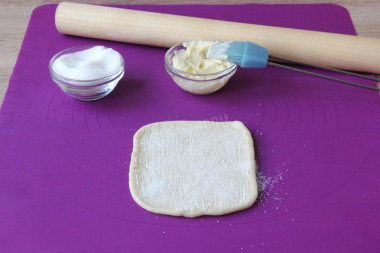
Forming BUNS: Brush the table or rug with vegetable oil quite a bit, lightly press a round piece of dough into a flatbread, roll out easily about 0.5 cm thick. Brush the flatbread with soft or melted butter, sprinkle with sugar / about 3-4 pinches /.
Step 13:
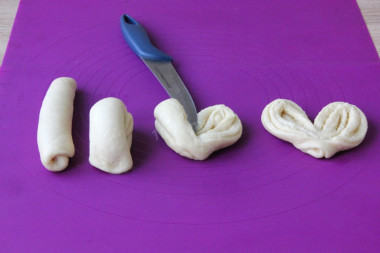
Roll the tortilla into a roll. Bend the roll in half, leave the seam inside, pinch the edges. Cut the workpiece from the opposite side of the joint, making an incision not to the end. Turn the bun slice up and carefully straighten the layers. So we will get cute buns with a heart.
Step 14:
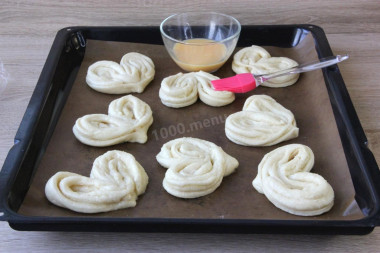
Spread the buns on a baking sheet covered with parchment or on a mat. So form all the buns. Cover with a film and leave for proofing for 15-20 minutes. Beat the remaining 1 tbsp.l. egg and 1 des.l. milk, gently lubricate the buns, you can additionally sprinkle them with sugar.
Step 15:
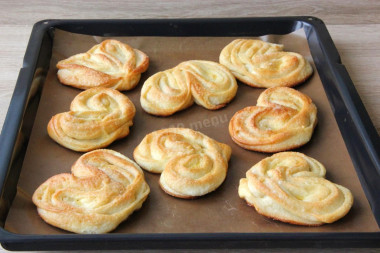
Immediately bake in a preheated oven at 190 degrees for about 16 minutes, until golden brown. Cover the finished buns with a towel and let cool. While the first batch is being baked, similarly prepare 8 more buns and leave them to rise. The buns will increase greatly, leave enough distance for the ascent. I got 2 large baking sheets.
There is no filling as such in the bun, butter and sugar are used, so the buns always rise well and bake smoothly.
Perhaps this is one of the light yeast products from which you can start getting acquainted with yeast dough and baking from it.
You can form sweet rolls with sugar in different ways, but in the shape of a heart or a butterfly, probably the most spectacular, favorite and familiar way for everyone.
Be prepared for the fact that flour may need more or less than indicated in the recipe. Focus not on the amount of flour, but on the desired consistency of the dough. To avoid mistakes, read about flour and its properties!
The liquid in which yeast is bred should be pleasant to the touch, no higher than 40 degrees. Why is this important? In a warm environment, yeast is well activated, in a hot one it will die, and in a cold one it simply will not work. To avoid unpleasant surprises, check the yeast before mixing with the rest of the ingredients. Pour a little warm milk into a bowl, stir in the yeast. Cover the bowl with a kitchen towel and put it in a warm place without drafts for 10-15 minutes. During this time, a foam yeast cap should appear on the surface of the sponge. If this did not happen, then the fermentation process has not started (the yeast is overdue or spoiled). In this case, it is worth taking other yeast, otherwise baking will not work.
Keep in mind that everyone's ovens are different. The temperature and cooking time may differ from those specified in the recipe. To make any baked dish successful, use useful information about the features of ovens !
Caloric content of the products possible in the composition of the dish
- Whole cow's milk - 68 kcal/100g
- Milk 3.5% fat content - 64 kcal/100g
- Milk 3.2% fat content - 60 kcal/100g
- Milk 1.5% fat content - 47 kcal/100g
- Concentrated milk 7.5% fat content - 140 kcal/100g
- Milk 2.5% fat content - 54 kcal/100g
- Chicken egg - 157 kcal/100g
- Egg white - 45 kcal/100g
- Egg powder - 542 kcal/100g
- Egg yolk - 352 kcal/100g
- Ostrich egg - 118 kcal/100g
- Granulated sugar - 398 kcal/100g
- Sugar - 398 kcal/100g
- Butter 82% - 734 kcal/100g
- Amateur unsalted butter - 709 kcal/100g
- Unsalted peasant butter - 661 kcal/100g
- Peasant salted butter - 652 kcal/100g
- Melted butter - 869 kcal/100g
- Vegetable oil - 873 kcal/100g
- Salt - 0 kcal/100g
- Water - 0 kcal/100g
- Wheat flour - 325 kcal/100g
- Vanillin - 288 kcal/100g
- Fresh yeast - 109 kcal/100g

